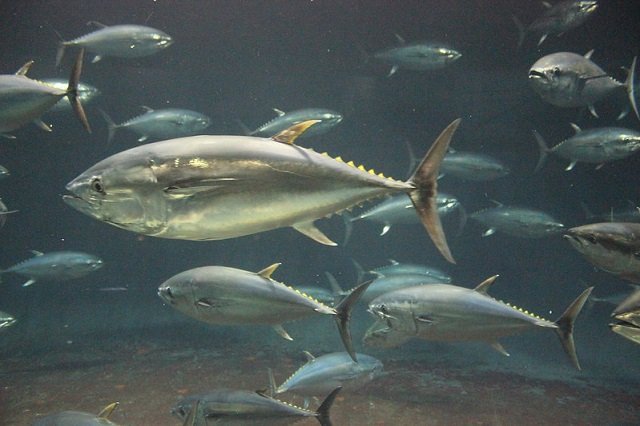
The global demand for fish is on the rise, and as wild fish populations face depletion, the responsibility to meet this growing need falls on sustainable aquaculture.
Researchers from the University of Tabriz, the University of Tehran, Murdoch University, the Nuclear Science and Technology Research Institute, and Urmia University have published a scientific review focusing on the evidence supporting the beneficial effects of various microalgae on the biochemical and organoleptic aspects, as well as the proximal composition of fish meat.
Microalgae: An Alternative for Fish Nutrition
Gone are the days when aquaculture relied solely on fishmeal, a traditional feed ingredient linked to overfishing and environmental concerns. Microalgae offer a sustainable and ecological alternative to feed fish, providing essential nutrients such as vitamins, polyunsaturated fatty acids, amino acids, minerals, and pigments. These microorganisms have the potential to enhance fish growth, health, and even skin coloration.
Key Microalgae Used in Aquaculture
The main microalgae used in fish feed include Spirulina, Chlorella, Dunaliella, and Haematococcus. Studies have shown that incorporating these microorganisms into the fish diet can work wonders, not only for fish health and growth but also for the quality of the meat we ultimately enjoy.
Microalgae: The Superfood Enhancing Fish Health
When microalgae are added to fish feed, they have the potential to protect fish from pathogens. Studies have demonstrated that these microscopic wonders can:
- Increase disease resistance: The immunomodulatory properties of microalgae help fish fight infections and stay healthy.
- Improve immune and antioxidant activities: Microalgae protect fish cells from damage and keep them in optimal condition.
Impact of Microalgae on Fillet Quality
The influence of microalgae on the quality of fish meat is well-documented. Biochemical aspects such as protein content and lipid composition are positively affected, leading to a richer nutritional profile. Microalgae, containing various biological compounds like n-3 LC-PUFA, polysaccharides, and carotenoids, can enhance the nutritional value of fish fillets from aquaculture.
Furthermore, studies suggest that microalgae can improve the sensory experience, making fish fillets even more delightful. By incorporating microalgae into fish feed, you can:
- Enhance fillet quality: Microalgae can improve the nutritional profile of fish meat, increasing protein and omega-3 fatty acid content.
- Extend shelf life: Certain microalgae have antimicrobial properties that help prolong the shelf life of fish fillets.
- Improve sensory properties: Some microalgae even add a subtle and pleasant flavor to the fish.
Sustainability with a Cautionary Note
While the benefits of microalgae in aquaculture are undeniable, some challenges remain. Some species harbor toxins or trace elements that may pose risks to aquatic animals. Additionally, production costs can be a barrier to wider adoption. However, ongoing research and development are continuously addressing these challenges, paving the way for a future where microalgae reigns in sustainable and delicious aquaculture.
Stay Always Informed
Join our communities to instantly receive the most important news, reports, and analysis from the aquaculture industry.
Conclusion
The study reports that the inclusion of various microalgae in the fish diet has a positive impact on fillet quality (e.g., increased omega-3 fatty acid content), fillet sensory properties (e.g., color, flavor, and aroma), and fillet preservation during storage.
“This review provides compelling evidence for the inclusion of microalgae in fish feed formulations, which could have significant implications for the aquaculture industry and the seafood market,” concluded the researchers.
Microalgae are not only good for fish and delicious for us but also beneficial for the planet. They can be cultivated in ponds or tanks of saltwater or freshwater, using minimal land and water resources. This makes them a much more sustainable alternative to traditional fishmeal, which often comes from overexploited wild populations.
With their incredible nutritional power and environmentally friendly nature, microalgae offer a promising solution to the challenges of aquaculture. The study has been funded by the Faculty of Veterinary at Tabriz University.
Contact
Najmeh Sheikhzadeh
Department of Food Hygiene and Aquatic Animals, Faculty of Veterinary Medicine
University of Tabriz, Tabriz 5166616471, Iran
nsheikh@tabrizu.ac.ir
Reference (open access)
Sheikhzadeh, Najmeh, Mehdi Soltani, Marzieh Heidarieh, and Mahdi Ghorbani. 2024. “Role of Dietary Microalgae on Fish Health and Fillet Quality: Recent Insights and Future Prospects” Fishes 9, no. 1: 26. https://doi.org/10.3390/fishes9010026
Editor at the digital magazine AquaHoy. He holds a degree in Aquaculture Biology from the National University of Santa (UNS) and a Master’s degree in Science and Innovation Management from the Polytechnic University of Valencia, with postgraduate diplomas in Business Innovation and Innovation Management. He possesses extensive experience in the aquaculture and fisheries sector, having led the Fisheries Innovation Unit of the National Program for Innovation in Fisheries and Aquaculture (PNIPA). He has served as a senior consultant in technology watch, an innovation project formulator and advisor, and a lecturer at UNS. He is a member of the Peruvian College of Biologists and was recognized by the World Aquaculture Society (WAS) in 2016 for his contribution to aquaculture.




